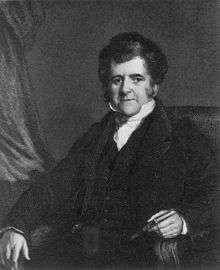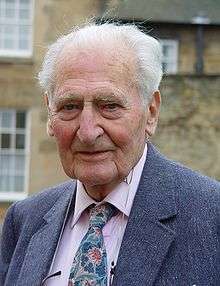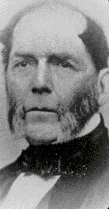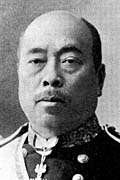King's College London GKT School of Medical Education
| Type | Medical school | |||||
|---|---|---|---|---|---|---|
| Established |
1173 (St Thomas's hospital as 'teaching hospital') 1550 (St Thomas's Hospital Medical School) 1909 (King's College Hospital Medical School) 1982 (United Medical and Dental Schools of Guy's and St Thomas' Hospitals) 1998 (Guy's, King's and St Thomas' School of Medicine) 2005 (King's College London School of Medicine) 2015 (King’s College London GKT School of Medical Education ) | |||||
| Dean | Professor Stuart Carney | |||||
Academic staff | 315 | |||||
Administrative staff | 450 | |||||
| Students | 2200[1] | |||||
| Location | London, England | |||||
| Campus | Guy's Campus | |||||
| Colours |
Navy blue, Gold, Purple, White, Red | |||||
| Affiliations | King's College London, University of London | |||||
| Website | www.kcl.ac.uk/schools/medicine |
King's College London GKT School of Medical Education (abbreviated: GKT) is the medical school of King's College London and one of the United Hospitals. It is the biggest healthcare training facility in Europe.[2] The school has campuses at three institutions, Guy's Hospital (Southwark), King's College Hospital (Lambeth) and St Thomas' Hospital (Lambeth) in London. The school in its current guise was formed following a merger with the United Medical and Dental Schools of Guy's and St Thomas' Hospitals (GKT) on 1 August 1998.[3]
The medical school as a whole is the largest in Europe. It has an annual intake of around 335 places on the standard MBBS Programme, 50 places on the Extended Medical Degree Programme (EMDP)[4] and 28 places on the Graduate / Professional Entry Programme (GPEP).[5] It receives more applications for medicine than any other UK medical school and as of 2007 applicants were required to sit the UKCAT admission test. The school is ranked 8th in the world by Times Higher Education World University Rankings (Clinical, Pre-clinical and Health) 2015-2016.[6] The school is ranked 21st in the UK by the Complete University Guide 2016.[7]
Name
The School was named the GKT School of Medicine between 1998 and 2005. However, due to confusion over the official name of the institute, especially with regards to research emerging from the university, it was rebranded as the King's College London School of Medicine and Dentistry at Guy's, King's College and St Thomas' Hospitals.
In 2015, to reflect the strong history of the multiple institutions that comprise the medical school, the School once again rebranded as the King’s College London GKT School of Medical Education.[1]
History



The hospitals associated with King's College London GKT School of Medical Education, i.e., Guy's Hospital, King's College Hospital and St Thomas' Hospital (hence the GKT name and abbreviation), are: "amongst the oldest hospitals in the world, having endured the Black Death, the plague, the War of the Roses, the Great Fire of London, the Blitz and over 60 years of NHS reforms."[9]
Of the three hospitals, St Thomas' Hospital is the oldest and was founded in 1173 but whose roots can be traced to the establishment of St Mary Overie Priory in 1106.[10][11][12] Sir Thomas Guy, a governor of St Thomas', founded Guy's Hospital in 1721 as a place to treat 'incurables' discharged from St Thomas'.[13]
St Thomas's Hospital Medical School was founded in 1550 and was sited across St Thomas' Hospital and Guy's Hospital. In 1769 it was decided that Guy's would teach mainly medical subjects, whereas St Thomas' would focus on surgery[14] and the joint teaching institution was generally known as The Borough Hospitals. However, a dispute between the two hospitals regarding the successor to Sir Astley Cooper resulted in Guy's Hospital establishing its own medical school in 1825. After this, students of surgeons attended operations at both hospitals until 1836. A riot between students of the two hospitals broke out in the operating theatre at St. Thomas's in 1836 which ended the arrangement.[15] St Thomas's Hospital Medical School and Guy's Hospital Medical School were two of the oldest and most prestigious medical schools in the UK.

In 1982 the two medical schools decided to merge and formed the United Medical and Dental Schools of Guy's and St Thomas' Hospitals, more commonly known as UMDS. It was enlarged in 1983 when the Royal Dental Hospital of London School of Dental Surgery merged with Guy's Hospital Dental School, and again in 1985 with the addition of the Postgraduate Institute of Dermatology.[16]
Initially students of UMDS were allocated to one of the two campuses, with most preclinical teaching and all clinical teaching being separate. With the intake of 1989, students ceased being allocated in this way, and teaching for all students was divided between the campuses and their peripheral hospitals.
Discussions between King's College London (which had trained medical students since it was established and founded its own hospital, King's College Hospital, in 1840) and UMDS regarding a further merger began in 1992. UMDS was subsequently absorbed into King's College London on 1 August 1998,[3] forming the Guy's, King's and St Thomas' School of Medicine, more commonly known as GKT.[17] In 2005, the entity was rebranded King's College London School of Medicine and Dentistry at Guy's, King's College and St Thomas' Hospitals, also known as KCLMS. However it is still widely known as GKT amongst current students, graduates and consultants who consider themselves affiliated to the hospitals rather than the university.
In 2005 the dental school became the Dental Institute and the remainder was renamed the King's College School of Medicine. The dean, Robert Lechler, oversees the running of both the Medical and Dental schools, as well as the School of Biomedical Sciences (all three were formerly regarded as GKT before the rebranding).
Before the start of the 2010/11 academic year, Physiotherapy became a part of the School of Medicine, having previously been run by the School of Biomedical and Health Sciences.
Research

The School's research excellence is recognised worldwide and the 2008 Research Assessment Exercise confirmed King's as one of the top two universities in the UK for health research strength. Around 70 percent of health science submissions from King's were ranked in the top six within the UK.
Currently, the School hosts six MRC Centres,[18]
- MRC-Asthma UK Centre in Allergic Mechanisms of Asthma
- MRC Centre for Developmental Neurobiology
- MRC Centre for Neurodegenerative Research
- MRC Centre for Social Genetic and Developmental Psychiatry
- MRC Centre for Transplantation
- MRC-HPA Centre for Environment and Health (awarded in 2009[19] in collaboration with Imperial College London)
The two MRC Centres in Transplantation and the Allergic Mechanisms of Asthma in 2008 alone were awarded 'Centre of Excellence' status by the British Heart Foundation with funding of £9 million and a £4 million Breakthrough Breast Cancer Unit was opened in 2009.[20]
The School is also host to its own 'Centre of Medical Law and Ethics', the first of its kind in the UK,[21] and in March 2009, the school was accredited as an Academic health science centre, one of only five in the UK.[22]
Sports teams
Like other medical schools in the UK, GKT has its own sports teams which compete in various student sports leagues and tournaments.
Like most other universities in London GKT sports teams take part in the BUCS leagues and cups and the University of London Union leagues and cups. The GKT teams also take part in the United Hospitals Cup, which is a sporting competition played between the medical, dental and veterinary schools of London in all sports. The two most popular and biggest of the competitions include the United Hospitals Bumps (rowing) and the men's rugby.
GKT has a fierce sporting rivalry with King's College London. This rivalry led to the founding of the Macadam Cup in 2004, which pits GKT and KCL sports teams against each other.
Notable alumni, academics and staff
- Recep Akdağ, Turkish Health Minister
- Eric Anson, New Zealand's first specialist anaesthetist
- Rifat Atun, Professor of Global Health Systems at Harvard University
- William Bowman, ophthalmic surgeon, helped found Ophthalmological Society of the United Kingdom
- Sir James Black, Nobel Prize laureate for Medicine in 1988 for work leading to the development of propranolol and cimetidine
- William Bowman, ophthalmic surgeon, helped found Ophthalmological Society of the United Kingdom
- Richard Bright, discoverer of Bright's disease
- Russell Brock, Baron Brock, pioneering cardiothoracic surgeon
- Sir Astley Cooper, discoverer of the Cooper's ligaments of the breasts
- John Leonard Dawson, Serjeant Surgeon to the Royal Household of the United Kingdom
- Richard Doll, epidemiologist and physiologist; established link between smoking and cancer
- Havelock Ellis, physician, sexual psychologist and social reformer
- Reita Faria, Indian model and Miss World 1966
- William Fergusson, surgeon who introduced the practice of conservative amputation
- David Ferrier, pioneering experimental neurologist
- Abraham Pineo Gesner, surgeon and inventor of kerosene refining
- John Hilton, great anatomist and surgeon
- Thomas Hodgkin, discoverer of Hodgkin's lymphoma
- Sir Frederick Hopkins, discoverer of vitamins
- Takaki Kanehiro, Japanese naval doctor, first person to discover the link between beriberi and diet
- John Keats, writer
- Joseph Lister, pioneer of aseptic surgery
- W. Somerset Maugham, playwright, novelist, short story writer
- Humphry Osmond, psychiatrist who worked with psychedelic drugs and coined the term
- David Owen, Labour Foreign Secretary and founder of the Social Democratic Party
- Sir Alfred Poland, the first to describe Poland syndrome
- Dame Cecily Saunders, nurse, physician and social worker who developed the concept of the hospice and was a pioneer of palliative care
- Audrey Smith, cryobiologist who discovered the use of glycerol to protect human red blood cells during freezing
- Jeffrey Tate, conductor
- Max Theiler, virologist, awarded the 1951 Nobel Prize in Physiology or Medicine for developing a vaccine for yellow fever
- Sheo Bhagwan Tibrewal, Orthopedic surgeon and Padma Shri awardee
- Robert Bentley Todd, known for discovering and describing the condition postictal paralysis now known as Todd's palsy
- Gerard Folliott Vaughan, UK psychiatrist, who became a politician and minister of state during Margaret Thatcher's government
- Sir Samuel Wilks, pathologist
- Fiona Wood AM, plastic surgeon, Australian of the Year 2005
References
- 1 2 http://www.kcl.ac.uk/lsm/education/meded/about/index.aspx
- ↑ http://www.bestcollegereviews.org/features/the-30-most-influential-colleges-and-universities-of-the-past-century/
- 1 2 The London Gazette: no. 55085. p. 3780. 1 April 1998. Retrieved 28 August 2013.
- ↑ https://www.kcl.ac.uk/prospectus/undergraduate/emdp
- ↑ "Medicine Graduate/Professional Entry Programme". kcl.ac.uk.
- ↑ "Subject Ranking 2015-2016: clinical, pre-clinical and health top 100". Times Higher Education (THE). Retrieved 2016-01-09.
- ↑ "Rankings". Complete University Guide. Retrieved 16 May 2015.
- ↑ "Venue Information".
- ↑ "A history of Guy’s, King’s and St. Thomas’ hospitals from 1649 to 2009: 360 Years of innovation in science and surgery". International Journal of Surgery 9: 414–427. 2011. doi:10.1016/j.ijsu.2011.04.002.
- ↑ "The Foundation of St Thomas's" (PDF). p. 1.
- ↑ "A Chronology of State Medicine, Public Health, Welfare and Related Services in Britain 1066-1999" (PDF). p. 11.
- ↑ "Our history".
- ↑ "Guy's Hopital Medical School:Records".
- ↑ http://www.qaa.ac.uk/reviews/reports/institutional/heqc/UnitedMedGuysStThomas_QAG369.asp
- ↑ "Aleph main menu". kcl.ac.uk.
- ↑ "Aleph main menu". kcl.ac.uk.
- ↑ "St Thomas's Hospital Medical School Records". Archives in London and the M25 area (AIM25). External link in
|publisher=(help) - ↑ http://www.kcl.ac.uk/research/mrc.html
- ↑ http://www.kcl.ac.uk/news/news_details.php?year=2009&news_id=1086
- ↑ "King's College London - Faculty of Life Sciences & Medicine". kcl.ac.uk.
- ↑ "King's College London - The Dickson Poon School of Law". kcl.ac.uk.
- ↑ KCL Medical Prospectus 2010
External links
- King's College London School of Medicine
- GKT Medical Students' Association (MSA)
- King's College London School of Medicine student lists
- King's College London School of Medicine military personnel,1914-1918
| ||||||||||||||||||||
| ||||||||||||||||||||||||||||||||||||||||||||






.jpg)










